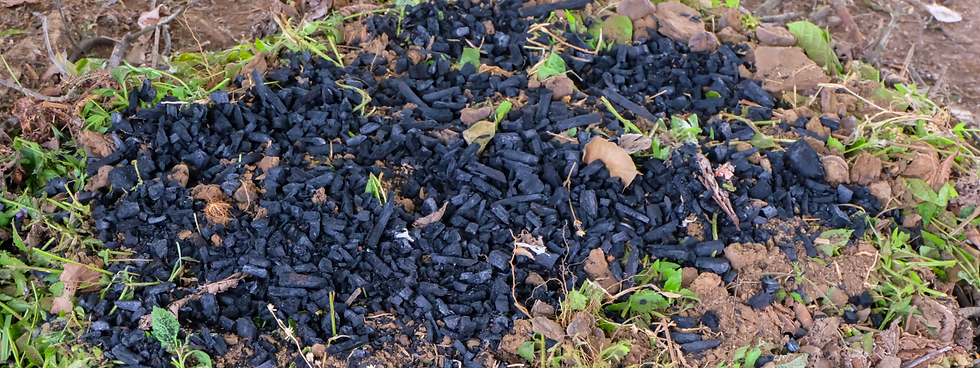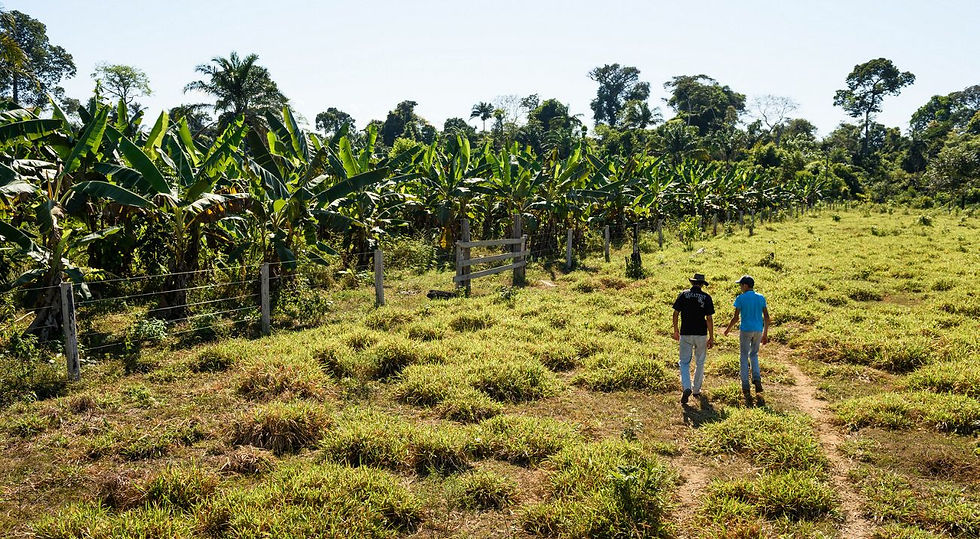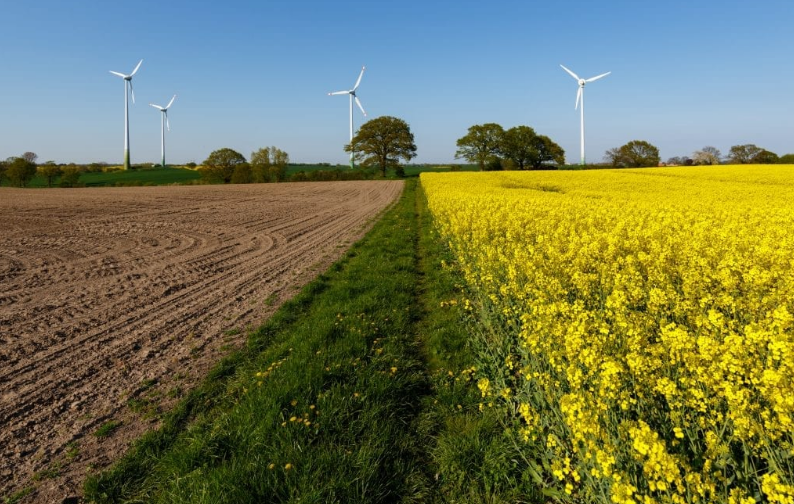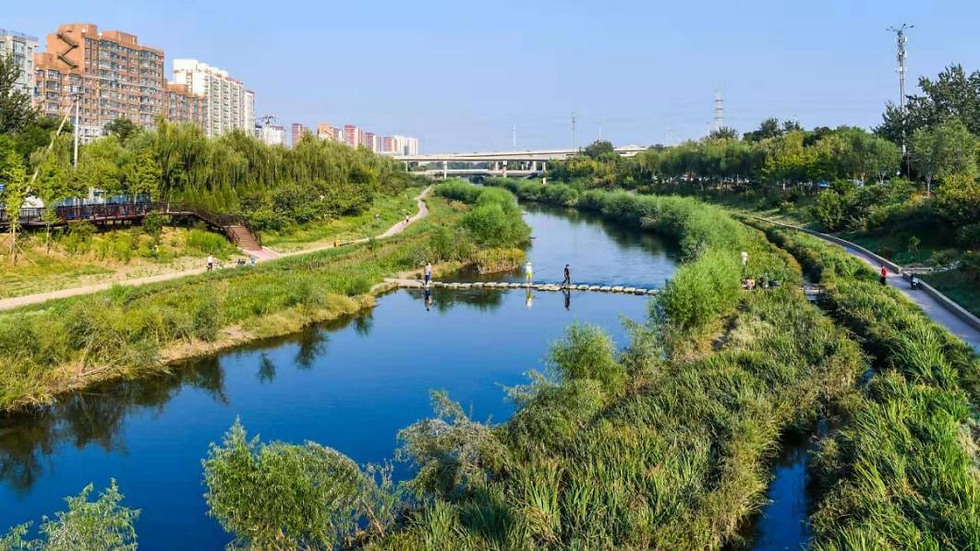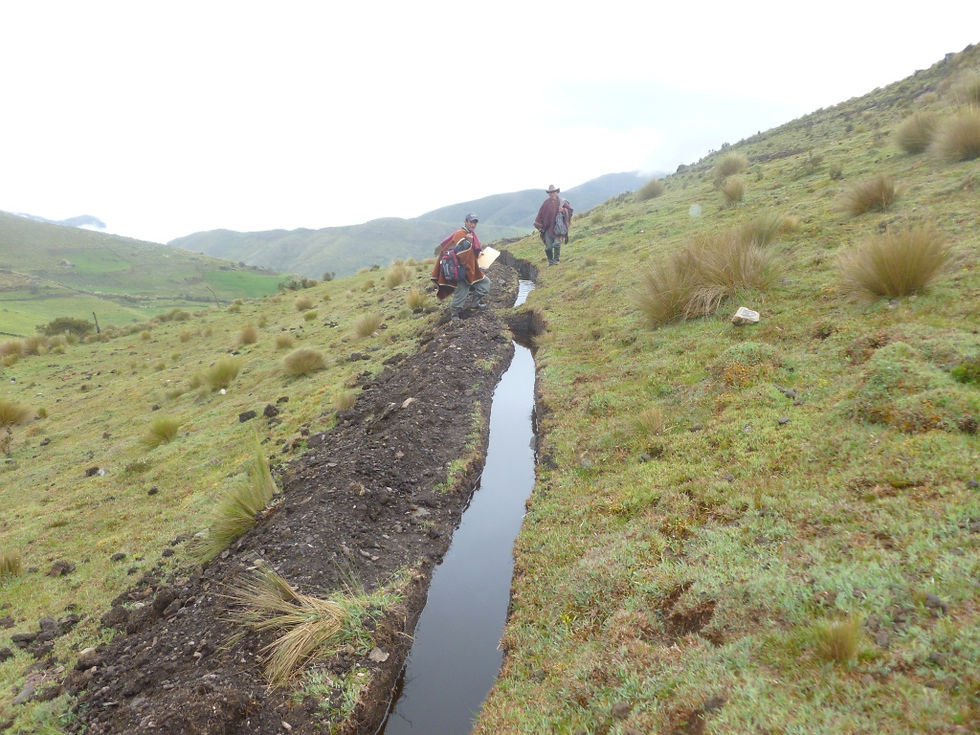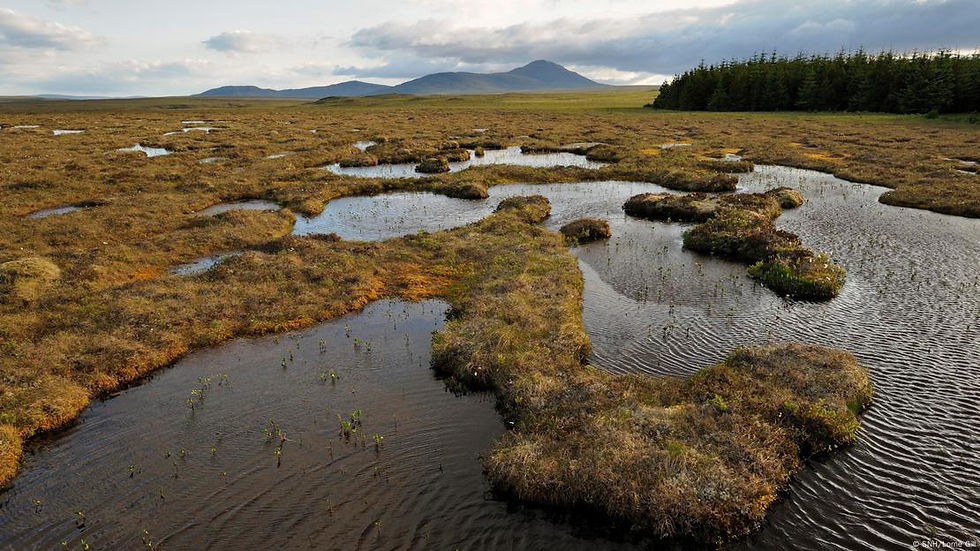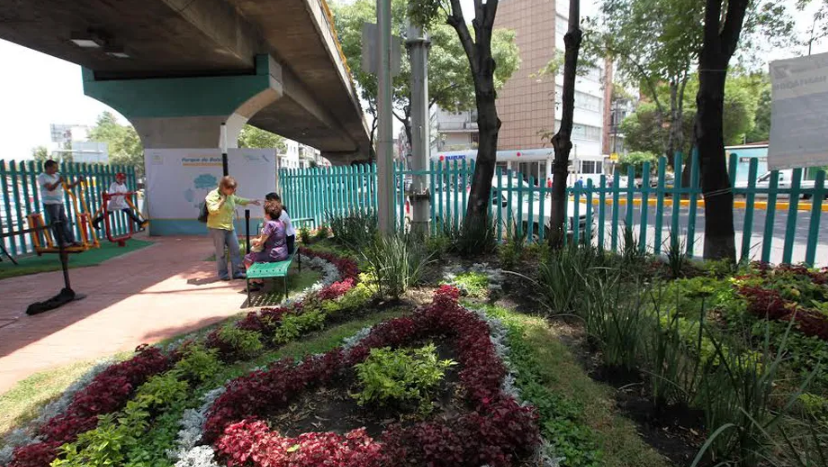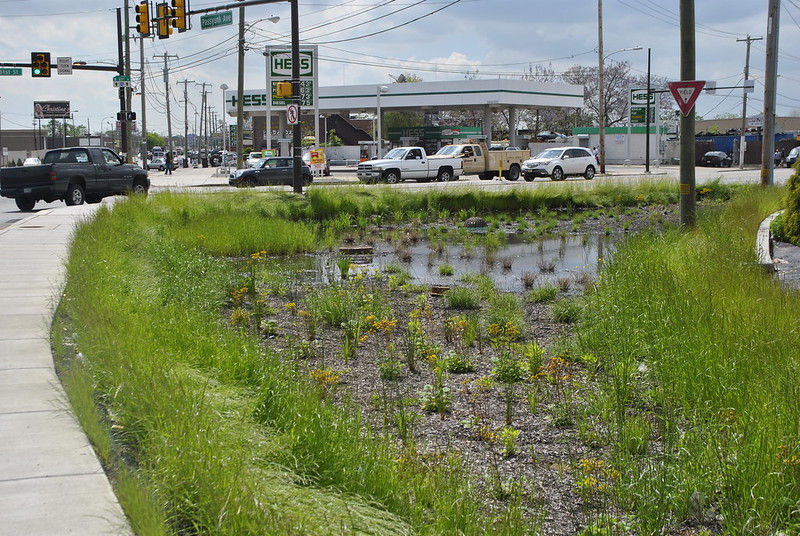Learn here about the technologies that are being used in the Americas for the integrated management of water resources and good agricultural practices.
Technology Atlas
AFINS_2.0
AFINS 2.0 is software developed by IIAMA-UPV for the statistical analysis of extreme hydrological events. It allows users to work with observed, historical, or paleohydrological data, even if incomplete, using advanced estimation methods and various statistical distributions. It facilitates the calculation of return periods and quantiles of flows or rainfall, supporting the assessment of hydrological risk in water management and safety studies.
AQUAMAPS
AQUAMAPS, developed by FAO as a complement to AQUASTAT, is an online geospatial database that provides information on water and agriculture worldwide. Its platform allows users to view and download GIS-compatible data to support water resource management.
It includes layers on watersheds, rivers, water bodies, irrigated areas, dams, and climate variables (precipitation and evapotranspiration), as well as derivative products that integrate these data through geospatial models supported by AQUASTAT.
AgSense
AgSense is an advanced irrigation management platform that allows farmers to monitor and control their irrigation systems remotely from a PC, smartphone or tablet thanks to its digital modem technology. Key features include remote control of center pivots and other farm equipment, real-time monitoring of weather conditions and soil moisture with text message and email alerts, and customizable data and report generation that facilitates decision-making and reporting for irrigation districts.
Agricultural cloud systems
Cloud systems are essential for agricultural information management, as they allow for remote storage and control of data, replacing the need for hardware and software. This saves resources and facilitates decision-making by analysing elements such as soil, plants and water in real time.
AquaSpy
The AquaSpy platform is an advanced agricultural technology solution designed to optimize irrigation and improve crop management. AquaSpy helps farmers improve irrigation efficiency, reduce water waste and increase crop productivity, thus contributing to more sustainable agriculture, showcasing solutions for soil moisture monitoring, data analysis and nutrient management.
Arable
Arable is a crop intelligence platform that combines advanced sensors and agronomic models to provide real-time weather, plant, soil and irrigation data. Its goal is to help farmers make informed decisions that improve the productivity and sustainability of their crops. In addition, it is easy to set up and use, enabling quick benefits.
ArcGis for georeferenced water modeling
ArcGIS is a complete system for collecting, organizing, managing, analyzing, sharing, and distributing geographic information. In agriculture, ArcGIS can capture the Normalized Difference Vegetation Index (NDVI), which is crucial for estimating crop quantity, quality, and development.
Artificial wetlands
Constructed wetlands are water treatment systems that mimic the purification processes present in natural wetlands. These systems are part of the non-conventional, low-consumption wastewater treatment technologies. They are based on the interaction between phytoremediation (plant action) and microbiological processes.
Ashkelon desalinization plant
The Ashkelon desalination plant is one of the largest and most advanced membrane-based desalination plants in the world. Its revolutionary design includes a unique center-of-pressure arrangement for the reverse osmosis phase, which increases efficiency and significantly reduces the cost of water. With enormous capacity and extremely high efficiency levels, it has achieved one of the lowest prices for desalinated water in history. In 2010, due to the plant's unparalleled success, it was expanded by almost 20%, providing drinking water for approximately 15% of Israel's daily consumption. This achievement positioned IDE as a leader in SWRO desalination megaprojects. The plant features a novel four-stage system for removing boron to required levels. This element, due to its low concentration in seawater and its small atomic weight, has a high permeability in reverse osmosis systems. In addition, the plant has an energy recovery system after high-pressure pumping and passage through the membrane.
Auravant
Auravant is a precision agriculture application designed to help farmers manage their fields more efficiently and sustainably. The platform unifies data and transforms it into useful information for decision-making, optimizing the use of inputs such as water, fertilizers, and seeds. Users can access satellite images, yield maps, weather forecasts, and much more. It features GNDVI, which helps determine the amount of water and nitrogen plants are absorbing. This is crucial for optimizing irrigation and ensuring crops receive the right amount of water, avoiding both excess and shortages.
Biobeds
Biobeds are systems designed to degrade pesticides and other phytosanitary products that remain as residues after cleaning agricultural application equipment. These beds are composed of a mixture of straw, soil and compost, which encourages the growth of microorganisms capable of decomposing contaminants before they reach the soil or water. Pollution prevention: By degrading pesticides, biobeds prevent these chemicals from reaching surface and groundwater sources.
Biochar
Biochar is a carbonaceous material obtained by pyrolysis of biomass (agricultural residues, forest residues, manure) in the absence or with little oxygen. It has a porous structure, rich in carbon and very stable, which gives it benefits for improving soil, retaining water, and contributing to carbon sequestration.
Biotechnology: transgenic seeds
Agricultural biotechnology contributes to the sustainable use of this resource through the development of drought-resistant transgenic crop varieties or with current crops whose characteristics – such as insect resistance and herbicide tolerance – preserve resources such as water and soil.
Bluleaf
Bluleaf is a digital platform designed to optimize agri-food processes through digitization. It offers tools to improve operational efficiency, facilitate decision-making, and promote professional collaboration. It focuses on environmental sustainability and food security, with support for irrigation, nutrition, plant protection, and advanced data management and geospatial services.
BoosterAgro
BoosterAGRO is an application designed for farmers that centralizes all the climatic, agronomic and productive information of their fields. Its main components include weather forecasts, crop monitoring, rainfall maps and climate reports essential for the optimization of crops, water and soil.
Brazil Drought Monitor
The Brazil Drought Monitor is a tool that continuously monitors the severity of droughts in the country. This monitoring is based on climate indicators and the impacts caused by the phenomenon in both the short and long term. The program publishes a monthly map showing the drought situation in the different federal units of the previous month. This map uses a color scale to indicate the degree of severity of the drought, which can be: severe, moderate, severe, extreme or exceptional.
Breakwaters
Groynes, also called breakwaters or jetties, are transversal works that advance from the existing shore to the new shore line, to reduce the excessive width of the riverbed, causing sedimentation in the area limited by them and generating a displacement in the axis of the riverbed; they channel, correct or control the natural course of the water. These works have the purpose of directing the flow of the current, preventing the forces of the water from impacting on the margins.
Cardboard donuts
The tree planting project in the Atacama Desert has found a way to reclaim these lands, by planting trees in a clever ‘Cocoon’. The circular biodegradable cardboard structure can hold up to 25 litres of water, which the young tree can live off of as its roots grow. Up to 90% of trees planted in one of these cardboard ‘donuts’ survive, even during droughts. Overall, the Cocoon method uses five times less water than irrigation.
Celery
The Apio app is a farm management platform that centralizes climate, agronomic and production information to help farmers make informed decisions and improve the efficiency of their operations. The app provides weather forecasts, monitors crops, manages resources used, including water, and provides alerts and notifications.
Cesens®
It is an Agroclimatic Information System for decision-making in agriculture. It is based on stations that collect data from crops to obtain value-added information, such as the risk of infection or the need for irrigation. Cesens® agroclimatic stations are installed in the crop plots and send the data they collect to the cloud platform in real time.
Chaac Ha
This is a water harvesting concept that can collect water from both dew and rain. It is designed to be portable and affordable. It is inspired by nature in two of its key features. First, the shape and material of the rainwater-collecting membrane are inspired by the way bromeliads channel water into a central pond. Second, the structure supporting the membrane is inspired by a spider web, with its radial bamboo struts held in place by the tension of the membrane and by concentric radial cords, just as the radial cords of a spider web are separated by concentric radial threads.
Channels guard
Guard channels are ditches built near crops to efficiently direct water and prevent soil erosion, as well as avoiding the washing away of the fertile soil layer. These structures allow for better water management by directing it to specific areas of the farm, contributing to irrigation efficiency and preventing flooding.
Climate FieldView
Climate FieldView is a digital farming platform that helps farmers make data-driven decisions to improve the yield and profitability of their crops. In terms of water management, it enables early detection of crop water stress, optimization of water use so that plants receive the right amount at the right time, and real-time monitoring of water consumption, facilitating adjustments to irrigation practices when necessary.
Cloud seeding
Cloud seeding is a weather modification technique that involves dispersing substances into clouds to stimulate precipitation. This technique is based on the idea that precipitation formation can be stimulated by altering the microphysical conditions of clouds, i.e. the amount and size of water or ice particles within the clouds.
Coil irrigation
Serpentine or zigzag irrigation are grooves made in the ground to provide controlled (directed) flow of water below the surface of the crop. The type of furrow will depend on the slope of the land: if it is low in slope, linear furrows are used, but if there are relatively steep slopes, an option to use are “S” shaped furrows or ditches, which are also used on low slopes, in order to have greater control over the conduction of irrigation water.
Conservation agriculture
Conservation agriculture is a sustainable system that improves soil health and water use, based on keeping the soil covered, reducing tillage, and diversifying crops. These principles strengthen biodiversity, prevent soil degradation, and promote more efficient water management, which increases resilience to climate change.
Crop rotation
Crop rotation is an agricultural technique that involves alternating different crops on the same land to improve soil health, reduce pests, and preserve fertility. This practice also optimizes water use, improves soil structure, and contributes to more sustainable agriculture that is resilient to climate change.
Crop strip
This practice consists of sowing grass species on the perimeter of the crop, or even other types of crops in a strip that is 3 to 5 m wide. Its use can also be complemented with other buffer practices within and between fields. Shrub, grass and grass species adapted to the area are established on the edges of the field. To do this, a good sowing or planting process must be carried out, which implies paying attention to the preparation of the land, the density of sowing, the depth, the management of dates, etc.
Ditch careo
Careo is a system of Muslim origin by which farmers guide water from snow-capped mountains to aquifer recharge zones. When the heat begins, they use a system of irrigation ditches to transport the water from the thaw so that it infiltrates the aquifers and appears in the rivers and springs after two or three months, in the middle of summer when it is most needed for irrigation.
Drip irrigation
Water and nutrients are delivered to the field through a system of pipes called “drip lines,” which contain small devices called “drippers.” Each dripper emits a controlled stream of droplets containing water and fertilizer, resulting in an even application of water and nutrients directly to the root zone of each plant throughout the entire field.
EDANA
The EDANA platform is a soil moisture sensor system designed to optimize irrigation in agriculture. It uses Internet of Things (IoT) technology to transmit real-time data on soil moisture, allowing farmers to receive accurate alerts on when to turn irrigation on or off. In short, EDANA helps manage water more sustainably and efficiently, which is crucial in a context of increasing water resource scarcity.
Economic incentives in Jamaica for watershed management
CATIE (Tropical Agricultural Research and Higher Education Center), in collaboration with government agencies in Jamaica, is implementing an incentive program for small farmers. The goal is to promote practices that improve soil and water retention on their farms, such as natural barriers and agroforestry systems.
Excavation of Vigiñas
Vigiñas are excavations in the ground with a diameter of approximately 10 to 20 meters and a depth of 1 to 2.5 meters. These technologies provide water for the dry season and help the regrowth and growth of forage species. Likewise, vigiñas or qotañas can be of different sizes and storage capacities, depending on the water requirement and availability of areas for their construction.
Fogcatcher
The fog catcher, also known as a fog collector, is a system used to capture the microscopic water droplets that are present in the fog and transform it into water that can be used. It is a creative way to collect water and thus avoid the droughts that plague parts of the planet where there is also fog. This system, technically, does not create water; on the contrary, the water is collected through the microdroplets that are present in the fog.
Global Drought Information System (GDIS)
The Global Drought Information System (GDIS) is an international initiative that seeks to collect and compare drought information from different local and national sources. Its main objective is to provide a uniform platform for monitoring, predicting and managing droughts globally. GDIS offers tools and educational resources to help countries prepare for and respond to droughts, promoting collaboration and data sharing across different regions.
Green belts
Green belts are strips of vegetation that help manage water naturally and sustainably. They reduce runoff, filter pollutants, prevent erosion, and mitigate flooding. In addition, they improve biodiversity and the landscape and provide green spaces for the community, making them an effective solution to climate change.
GroGuru
GroGuru is an agricultural technology that improves irrigation efficiency through artificial intelligence and continuous root zone monitoring. It uses a wireless underground irrigation system (WUGS) to permanently install soil moisture sensors, providing precise recommendations on when and how much to irrigate, thereby optimizing water use and crop health.
Hippo water roller
The Hippo Water Roller is a device designed to facilitate the transport of water in rural communities. This device consists of an ultra-resistant plastic container that can store up to 90 liters of water. Its design allows the container to be rolled rather than carried, which significantly reduces the physical effort required to transport large quantities of water. The Hippo Water Roller has a steel handle that makes it easy to handle, allowing one or two people to push or pull it with ease. The use of this device has improved the quality of life for many people by reducing the time and effort required to collect water, allowing them to spend more time on other important activities such as education and work.
Homemade solar irrigation
Homemade solar watering with bottles is a simple and inexpensive technique to keep your plants hydrated using plastic bottles and solar energy. The solar energy heats the water in the small bottle, causing it to evaporate. The vapor condenses on the walls of the large bottle and drips to the ground, watering the plants constantly. This method is ideal for small orchards and gardens, as it is easy to implement and helps reuse materials.
HuraGis
HuraGIS is an ArcGIS extension from IIAMA-UPV that integrates climatic, cadastral, and agronomic information to calculate plot-level irrigation needs and generate optimized irrigation schedules. It helps improve the efficiency of localized irrigation, automatically updates climatic data, and allows the creation of thematic maps to assess agronomic and hydraulic management.
HydroPoint
HydroPoint is a company specializing in smart water management, developing technologies to optimize irrigation, control flow, and detect leaks. Its systems combine hardware and subscription services, automatically adjusting irrigation based on the local climate. It uses IoT technology to analyze climate and soil factors in real time, improving water efficiency and sustainability.
Hydroscrew
The hydroscrew is a turbine operated by the weight of water, acting as a gravimetric machine. The water fills the compartments of the screw, which descend due to their own weight and the helical surface of the propeller, generating the rotation of the screw and converting potential energy into mechanical energy.
Infiltration trenches
Infiltration trenches are excavations in the ground 2 to 3 meters long and 1 meter wide and deep, useful for reducing surface runoff and erosion. They are also used as part of rainwater treatment and harvesting systems, since the soil and porous materials in the trench can retain and filter pollutants from rainwater before they infiltrate into the soil.
Invigorating
Invigorating agents are compounds of natural or synthetic origin, which when applied to plants, affect plant metabolism through biochemical action mechanisms that allow for optimizing transpiration. These compounds have many advantages, since they function in part as a biostimulant and/or organic fertilizer, also providing protection against climatic stress.
John Deere Field Connect
John Deere Field Connect is a precision farming system that allows farmers to monitor soil moisture at different depths using probes installed in the field. The information is sent to a web platform accessible from any device. In addition, it can integrate environmental sensors to measure variables such as temperature, wind, rain and solar radiation. Its main objective is to help optimize irrigation, save water and improve crop productivity and quality.
Kaplan turbine
The Kaplan turbine, invented in 1913 by Austrian professor Viktor Kaplan, is based on the principle of a ship's propeller. The Kaplan turbine is an axial type turbine in which the flow of water causes the propeller blades to rotate in and out in an axial direction relative to the propeller's axis of rotation.
Lindsay Corporation
Lindsay Corporation is a leading global manufacturer and distributor of irrigation and infrastructure equipment and technology, specializing in agricultural irrigation solutions, including center and lateral pivot systems, remote irrigation management technology and engineering services.
MODIS - NASA
The Moderate Resolution Imaging Spectroradiometer (MODIS), aboard NASA's Terra and Aqua satellites, observes the Earth in 36 spectral bands with resolutions between 250 m and 1 km, generating global coverage every 1-2 days. Its data are key for monitoring vegetation, fires, clouds, and land and ocean temperatures.
In water management, MODIS can detect variations in soil moisture, changes in water bodies and basins, and assess droughts and floods. In this way, its measurements support both scientific research and strategic planning for sustainable water use.
Macro tunnels for controlled environments.
The technology consists of building small structures (5 m wide by 16 m long) in the form of tunnels that serve to protect crops, especially vegetables. In their manufacture, iron rods are used, which form an arch when embedded in the ground, supported by posts with round sticks and attached to galvanized wires to which a plastic cover is tied, for protection against ultraviolet rays.
Marginal coatings
They consist of natural material that is transplanted, or artificial material, for example in the form of gabions, which is placed directly on the ground of the bank, so that it cannot be eroded and carried away by the current. To do this, the bank is outlined with a slope that allows the easy and safe placement of the protective material.
Minecraft education
Minecraft Education can be a powerful tool to address current issues like climate change and agriculture in a number of ways:
Environmental Education: Minecraft Education allows students to explore and learn about environmental issues in an interactive environment. For example, they can participate in global challenges like “Peace with Nature,” where they design sustainable solutions for their communities. This helps students better understand environmental issues and think of creative solutions.
Ecosystem Simulation: Students can create and manage virtual ecosystems, learning about biodiversity, deforestation, and the impact of climate change on different species2. These simulations can help students visualize and understand the complexities of real ecosystems.
Sustainable Agriculture: Minecraft Education can also teach sustainable farming practices. Students can experiment with different farming techniques, learn about crop rotation and soil management, and see the effects of these practices in a controlled environment3.
Minimum tillage
Also known as minimum tillage, this practice consists of intervening as little as possible in the soil when cultivating it so as not to interfere with the natural processes that take place there. Minimum tillage is the smallest amount of tillage required to create the soil conditions suitable for seed germination and plant development. The soil is prepared in the strips/bands formed by the furrows where sowing will take place (Individual minimum tillage).
Misting irrigation
Misting irrigation is a technique used in greenhouses to provide water and humidity to crops in a uniform manner. It works by spraying water droplets at high pressure, creating a mist that disperses in the greenhouse environment, efficiently supplying the necessary amount of water to the plants.
Mountain microorganisms
Mountain microorganisms (MM) are a diverse mix of bacteria, fungi, yeasts and other tiny organisms that inhabit natural soils, especially in forest and mountain areas. These microorganisms play a crucial role in maintaining the ecological balance and fertility of the soil. These microorganisms are essential for a greener and more sustainable agriculture, helping to revitalize degraded soils and reduce the use of chemicals. Regarding water, MM reduce pollutants reaching water sources, improve soil filtration and provide a stable soil structure by controlling erosion and sedimentation in water bodies.
NTSG
The University of Montana's NTSG integrates satellite data and numerical models to study terrestrial processes. Its estimates of evapotranspiration, soil moisture, and water balance help optimize irrigation, manage water resources, and anticipate droughts. These products, used by NASA and the FAO, also support agricultural planning and climate change analysis.
Netafim
Netafim is a company specializing in precision irrigation, founded in 1965 in the Negev Desert, Israel. It is a pioneer in drip irrigation, a technology that optimizes water use by delivering water directly to plant roots. With a presence in more than 110 countries and over 10 million hectares irrigated, its mission is to address water, food, and land scarcity through sustainable and innovative agricultural solutions.
Now FONTAGRO
It is a free-access app that captures and analyses climate data from the countries' production areas to reduce the vulnerability of small producers to climatic events and supports decision-making for efficient and resilient agronomic management, increasing productivity and reducing losses caused by delays in growth, flowering and fruit harvest.
OnFarm
OnFarm is a platform that offers advanced solutions for irrigation control and monitoring, helping farmers to optimize water use and improve crop efficiency. It allows automating irrigation by programming and controlling systems remotely, adjusting schedules and amounts according to the needs of each crop. In addition, it provides real-time data on soil moisture, weather conditions and irrigation status, and sends alerts to potential problems such as leaks or system failures. It also includes data analysis tools to identify patterns in water use to optimize resources and increase productivity.
Peatland restoration
Peatland restoration seeks to recover these degraded ecosystems, mainly by rewetting the soil and reintroducing native vegetation such as Sphagnum mosses. Healthy peatlands store carbon, regulate water, and harbor biodiversity; when degraded, they release greenhouse gases. Their restoration is key to mitigating climate change, conserving species, and securing water resources, with support from international organizations such as the IUCN, Ramsar, and UNEP.
Peruvian Amunas
Amunas, a word of Quechua origin from Peru that means “to retain,” are a pre-Hispanic system of artificially recharging aquifers through the planting and harvesting of water, which is still implemented by some Andean peasant communities in the aforementioned country, between the Puna and Quechua zones.
Pishku chaqui
It is an irrigation system in which the water from the river or stream is redirected through a main irrigation ditch. Every certain distance, part of the flow is directed to a secondary irrigation ditch, which is then divided into two by using scaffolds, forming an inverted “Y” shape that resembles a bird’s foot. The water, at the end of its journey through the tertiary irrigation ditches, begins to move by gravity and covers the surface of the land by flooding, thus facilitating the development of crops.
Platforms
Terraces are technologies that, through the action of man, modify the topography of sloping lands, with the purpose of making better use of resources, soil, water and climate, to carry out agricultural tasks. It is formed by a platform (terrace), which is filled with transported and selected material (gravel, soil and organic matter), and supported by walls, usually made of stones.
Pocket parks
A pocket park is a small green space in urban areas, created on unused land. Its purpose is to provide a nearby place for rest, socializing, and contact with nature, especially in areas with few parks. In addition to improving quality of life and beautifying the city, these parks can also include elements for sustainable rainwater management.
ProRindes
ProRindes (Simulated Yield Forecast) is a tool designed to predict the yield of crops such as soybeans, corn, wheat and barley in several locations in the Argentine Pampas region. It uses computer models that simulate the growth and development of crops, based on climate, soil and agronomic management data. This tool was initially developed as a proof of concept and is now operated by the National Meteorological Service, the Ministry of Agriculture, Livestock and Fisheries, and the civil organization CREA. ProRindes provides updated forecasts every 7-10 days during the agricultural campaign, helping producers make informed decisions about the management of their crops. In addition, ProRindes has a direct relationship with water resources, since crop yield is strongly influenced by availability and the platform has information on rainfall and water balances.
QGis for georeferenced water modeling
QGIS is a free and open source Geographic Information System (GIS) software. It allows processing, analysis, modeling and decision making based on geographic and territorial data. In agriculture, QGIS can capture the Normalized Difference Vegetation Index (NDVI), which measures crop health.
Ram pump
The hydraulic ram pump is a device that uses the energy of water located at a certain height (the level of a river, dam or other reservoir), which allows the water to be raised to a height greater than the initial height through the physical phenomenon known as "water hammer". The device pumps water continuously and operates without the need for electricity or fuel.
Recycling plants
The water treatment devices are based on natural filtration of plants and natural materials: laterites (iron-rich soil) and esparto grass, which are easily found in arid and semi-arid regions. The wastewater treatment system does not present any risk and takes up a very small space. It has the advantage of removing two to three times more nitrogen and almost five times more phosphorus compared to conventional phytopurification systems. This highly efficient natural solution is suitable for the treatment and recycling of wastewater from cafes, restaurants, isolated houses, residences, municipal buildings and dairy manufacturing plants and fish farms.
Reforestation drones
The main idea behind the tool is to create a low-cost drone with a wooden structure and get it to fly and spread seeds. Its system is 10 times cheaper than manual reforestation methods, as well as being faster and less destructive to the environment than other methods. The reforestation drone will not only produce oxygen, but also function as future entities that capture and store usable water resources.
Regaber
Regaber is a company specializing in professional irrigation systems, founded in 1980. It stands out mainly for its drip irrigation solutions, which are highly efficient and sustainable. Regaber offers a wide range of products and services, including: Drip irrigation systems: Ideal for maximizing water use and improving crop productivity. Filtration and control: Filtration equipment, control valves and regulation to optimize irrigation. Automation: Remote management and real-time control solutions to increase irrigation efficiency and sustainability.
Robotics in agriculture
Robotics is revolutionizing agriculture by improving productivity and working conditions. Autonomous systems and artificial intelligence are driving precision agriculture, enabling operations such as automated sowing, harvesting and irrigation. Agricultural robots guide themselves and perform complex tasks, such as weed detection, using advanced technology.
Rooftop cultivation
Rooftops of houses and buildings, with areas ranging from 20 to 200 m², can be transformed into urban gardens to grow family food, promoting self-sufficiency. In addition to improving air quality and contributing to thermal and acoustic insulation, this initiative provides a connection with nature in urban environments.
SISSA (Drought Information System for Southern South America)
The Drought Information System for Southern South America (SISSA) uses data from the Climate Hazards Group InfraRed Precipitation with Station Data (CHIRPS) product to estimate precipitation. CHIRPS is produced by the Climate Hazards Center at the University of California, Santa Barbara and the U.S. Geological Survey.
Saved
The term “atajados” comes from the word “atajar” or “to stop.” The atajados are small ponds dug into the ground to store rainwater and other sources. They have low construction costs and are appropriate for arid areas with rainfall concentrated in a few months of the year. Traditional technology is used, and due to its size it is suitable for family or multi-family units.
Semicircular ditches
The aim is to dig small, semi-circular pits that retain water. Because of their shape, they are called “earth smiles.” Rainwater that would have previously washed away, eroded and further hardened the surface is retained, water balance is restored and vegetation grows back. Restoring vegetation restores the water cycle. When this is done over a large area, it helps generate clouds, increasing rainfall in the area. This rain benefits vegetation, which continues to improve water tables and desertified lands are transformed into lush, green areas.
Sentek
Sentek is a company that designs, develops, and distributes advanced technologies for measuring and managing soil moisture, salinity, and temperature. Its products, including probes, telemetry systems, and software, enable groundwater monitoring and optimization of agricultural irrigation using accurate, real-time data.
Smart Hydro Power Turbine
This technology consists of a turbine with three blades, each one metre in diameter, connected to an electric generator. Driven by the flow of water, the design increases the speed of the water as it passes through the device, optimising production thanks to the curved shape of the blades.
SmartFruit-ALC FONTAGRO HUB
This platform will promote the development and adoption of technological solutions based on precision agriculture to strengthen the competitiveness and sustainability of family fruit systems (FFS) in LAC. The platform develops a collaborative IT tool called “OpenFruit” as a precision agriculture technology for small producers and fruit advisors in participating countries.
Suka Kollus
They are a pre-Hispanic agricultural system developed by the Tiwanaku culture in the Andean region. This system consists of the creation of elevated cultivation platforms interspersed with water channels. The channels, known as suka uma (water furrows), surround the platforms and help drain excess water and moderate temperatures, protecting crops from frost.
Sun filters
These are compounds that can be of natural or synthetic origin, and that when applied directly to plants, generate a protective layer that reduces direct solar radiation, maintaining optimal levels of transpiration and reducing thermal stress. Sun filters for plants can be found in various formats, either wettable powder or liquid, and generally contain similar formulations. They are applied foliarly, and their benefits are almost immediate, giving the crop a protective layer against UV and infrared rays, while allowing gas and water exchange at the stomatal level to remain uninterrupted, so the plant continues to grow and produce but with less stress from radiation and temperature.
Surfactants
They are compounds that, when added to irrigation water, allow certain properties of the water to be modified, such as the surface tension of the molecules. The final effect is to improve the wetting area of the water when it infiltrates the soil profile, allowing irrigation to be more efficient, since losses due to percolation and runoff of both water and nutrients are reduced. Most of these products are available in liquid form and are easily applied in irrigation cycles, following the manufacturer's instructions regarding the recommended doses for each crop. Their effects and benefits are noticeable in the short term, since their function is immediate when dissolved in the irrigation pond.
TETIS
TETIS es un modelo hidrológico e hidráulico distribuido del IIAMA-UPV que simula el ciclo del agua y los sedimentos en cuencas de cualquier tamaño, representando detalladamente los procesos físicos en cada celda del territorio. Incluye calibración automática y puede trabajar en escala corta (crecidas e inundaciones) y larga (recursos hídricos y erosión). Su versatilidad lo hace útil en gestión del agua, prevención de riesgos y planificación hidrológica, y es empleado por instituciones como la Agencia Vasca del Agua.
Taranis
Taranis is an agricultural intelligence platform that uses advanced images and artificial intelligence to detect pests, diseases and deficiencies in crops, helping to improve their productivity and profitability. In addition, its technology can be applied to water quality monitoring, detecting contaminants and assessing risks of floods or droughts in agricultural areas.
Teralytic
Teralytic is a soil health company that offers advanced technology to provide real-time data on soil conditions. Its flagship product is a 26-sensor probe capable of measuring moisture, salinity, nutrients (NPK), temperature, aeration, and other key factors at various depths, helping farmers make more accurate decisions and improve their yields.
Trimble Ag
Trimble Ag Software is a platform designed to help farmers manage their farming operations more efficiently. It offers a variety of tools and applications that allow farmers to plan their crops, run jobs in the field, monitor their fields in real time and keep detailed records for the entire farming year.
Trusty
Trusty is an app designed for precision agriculture, helping farmers optimize their farming practices through the use of advanced technology. This app allows users to monitor and manage their crops efficiently, using real-time data to make informed decisions about irrigation, fertilization and pest control.
USGS Hydrologic modeling software
Models developed by the United States Geological Survey (USGS) are widely used to predict the responses of hydrologic systems to changes such as increases in precipitation or groundwater pumping rates, and to anticipate the movement and fate of solutes and contaminants in water, crucial aspects of agricultural production.
Use of bioindicators
A bioindicator is a living organism that can be anything from a microbe, an insect or a fish, to a plant or algae, that allows us to quantify and qualify the level and evolution of contamination present in an aquatic system by determining its differential sensitivity to various toxic substances. Sampling of macroinvertebrates is linked to sampling of the chemical quality of the water.
Utilis
The technology works to detect water leaks from a long distance, it can quickly find hidden leaks underground that could take many months to discover, saving water and money. The technology works by using satellites orbiting the Earth at a distance of 650km. Using SAR (Synthetic Aperture Radar) technology, sensors on the satellite emit a pulse of energy and then detect what is reflected back. In this way, the sensors can “see” not only the surface of the Earth, but up to three metres below it. Leaks don’t need to be significant to be detected – just 0.5 litres per minute is enough for the sensors to detect them and locate them within a 100-metre radius. The technology can even tell whether it is detecting surface water, wastewater or drinking water. And these super sensors work day and night, regardless of the weather – luckily, clouds can’t confuse them.
Valley Irrigation
Valley Irrigation is a world leader in precision irrigation technology, specializing in center pivot and linear irrigation systems that maximize water efficiency and crop yields. Its products stand out for their durability, reliability and advanced technology. In addition, they offer remote management solutions that allow farmers to monitor and control irrigation from anywhere, helping to conserve water and optimize schedules according to the needs of each crop.
WATEX: Groundwater exploration
French physicist Alain Gachet was working on hydrocarbon exploration in Libya using the Watex technology he had created through his company RTI Exploration. That was his field of development: oil. While searching for this fuel, he accidentally found a deep water leak in an underground aqueduct in the middle of the desert.
Warka Water
Warka Water Towers are passive structures made of bamboo that operate using natural phenomena such as evaporation, condensation or gravity. Warka Towers are structures made of triangular meshes 10 metres high and weighing around 60 kg. They are made up of 5 modules arranged to collect drinking water from the air by condensation. On average, these structures manage to distribute between 40 and 100 litres of water per day. The air is usually highly saturated with water vapour. This fact makes it possible to collect water from practically any place in the world.
Water control towers
These are physical spaces from which the services of the entire water cycle and the environmental health of the territory can be managed in real time, offering everything from data capture to visualization, analysis, monitoring and remote control. In this way, they help combat climate change and contribute to the development of smart cities. They allow for optimised decision-making in urban hydraulic infrastructures, adapting innovation and advanced technology to the needs of each territory to control all these problems and guarantee the correct provision of water supply, sanitation and reuse services.
Water management platform for agriculture 2030
The project will implement pilot plots with technologies such as satellite images, field sensors and specialized software to improve irrigation management. The aim is to modernize irrigation techniques and strengthen monitoring and analysis of information at the plot and watershed level.
Zahori Method
The dowsing method is an ancient technique that aims to locate underground water wells and find out the flow or volume, depth and even its potability. The method is also known as "dowsing technique" and the dowser as "radiesthesist". It consists of stimulating the senses using simple elements in the form of a rod and pendulum, which amplify the radiation to detect water currents, magnetic flows, underground lakes, mineral veins, etc.
Zamorano tank
A Zamorano-type tank is a circular structure used primarily for water storage. It is built with overlapping metal sheets and a geomembrane or internal bag that contains the water. These tanks are common in rural and agricultural areas, where they are used to store large volumes of water for irrigation and other needs. This technology is an affordable and efficient solution to address water scarcity in agricultural activities, improving food security and positively impacting by maintaining and increasing economic income. In addition, it is a key tool within production to face the challenges of climate change.






















